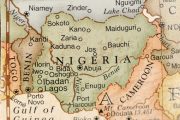
A private study by military and security professionals has concluded that the Americans killed at the Benghazi embassy annex on September 11, 2012 were killed by rebels who had been supplied with weapons by the U.S. government.
The Interim Report by the “Citizens Commission on Benghazi” concluded that “the U.S. was fully aware of and facilitating the delivery of weapons to the al-Qa’eda-dominated rebel militias throughout the 2011 rebellion.” The group’s report stressed that “the key significance of this episode is the demonstration of a military chain-of-command relationship between the Libyan Muslim Brotherhood leadership of the TNC and the al-Qa’eda-affiliated militia (Ansar al-Shariah) that has been named responsible for the attack on the U.S. mission in Benghazi.” U.S. Ambassador to Libya Christopher Stevens and three other Americans were killed in an attack on a consulate annex maintained by the CIA on September 12, 2012.
The “Citizens’ Commission on Benghazi” was formed by the conservative Accuracy in Media organization in Washington, and staffed by 18 former high-ranking military and intelligence specialists for the U.S. government — most of whom held the rank of colonel, admiral, or general, or served in Special Forces.
The commission also concluded that “The war in Libya was unnecessary, served no articulable U.S. national security objective, and led to preventable chaos region-wide.” The interim report authors stressed that Qadhafi was already on the way out of power before the United States entered the war. “Within days of that declaration of U.S. government support for the Libyan rebels, Qaddafi sought to enter into negotiations with the U.S. Africa Command (AFRICOM) under a flag of truce for the purpose of discussing his possible abdication and exile.”
The Interim Report confirmed much of what The New American has been reporting for more than a year, using publicly available information reported in the major media. For more information on The New American’s reporting on Benghazi, see the articles linked to below.
Photo of damaged U.S. consulate annex in Benghazi, Libya, from Sept. 13, 2012: AP Images
Related Articles
Chaos Reigns After Obama Gave Libya to Jihadists; Syria May Be Next
Impeach-Obama Calls Grow After Latest Benghazi Revelations
Amid Political Posturing, Real Benghazi Scandals Ignored
N.Y. Times’ Benghazi Whitewash Backfires, Spotlights Obama/Clinton Coverup



